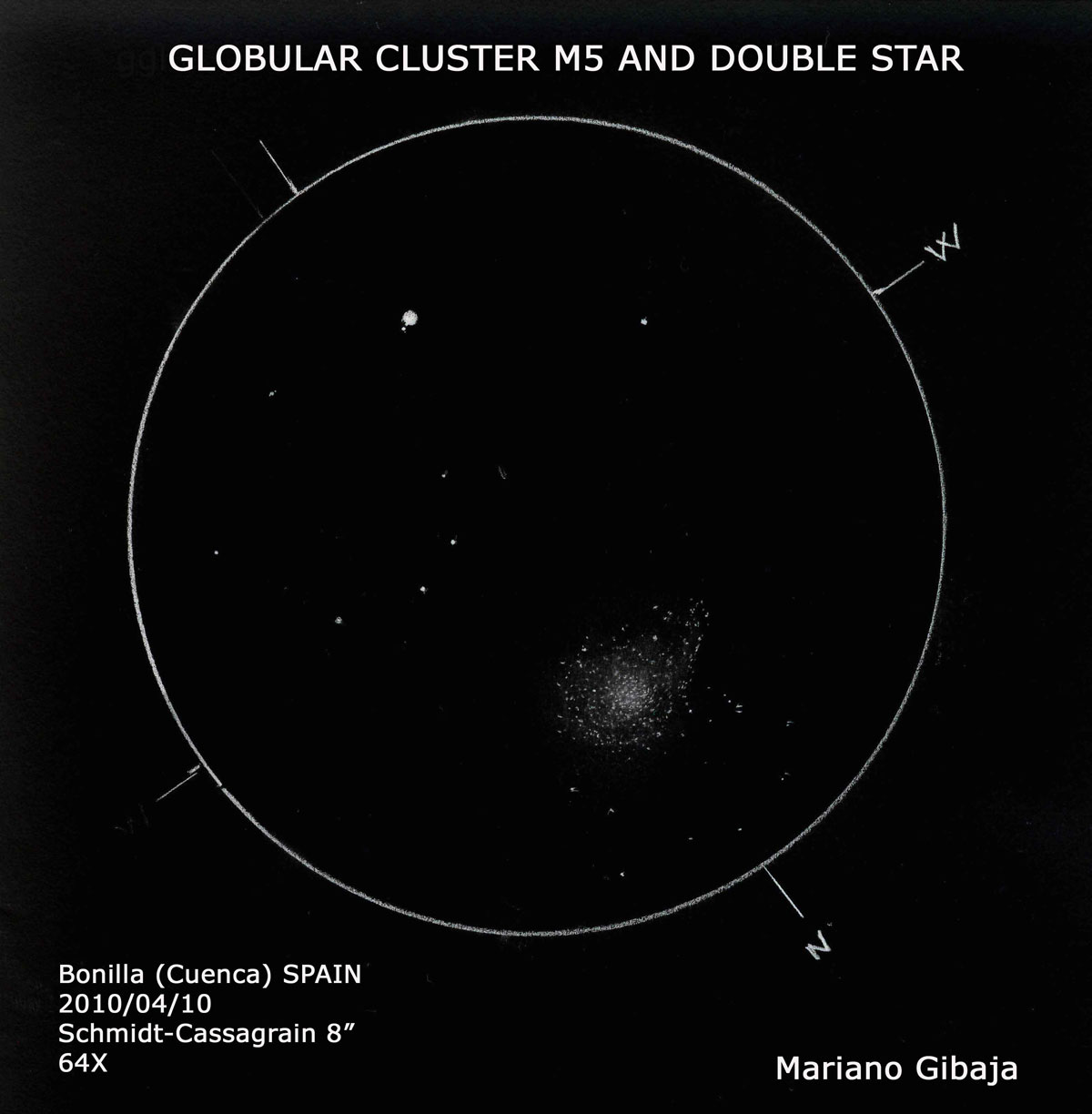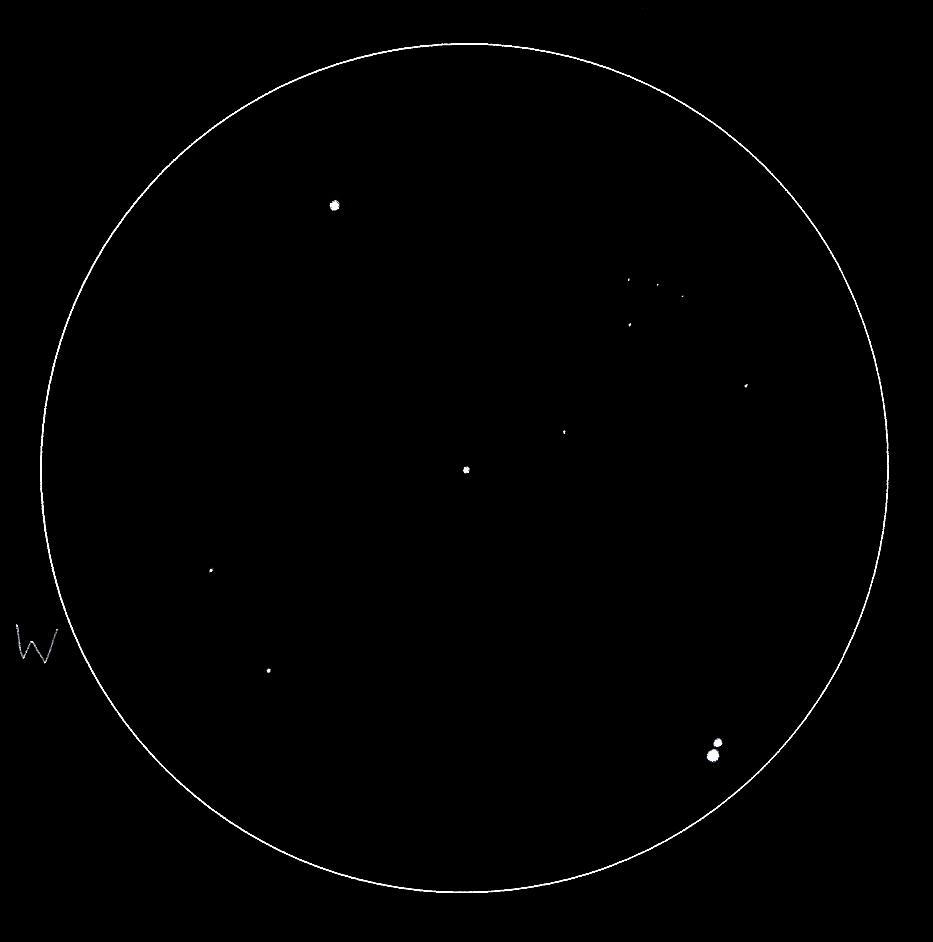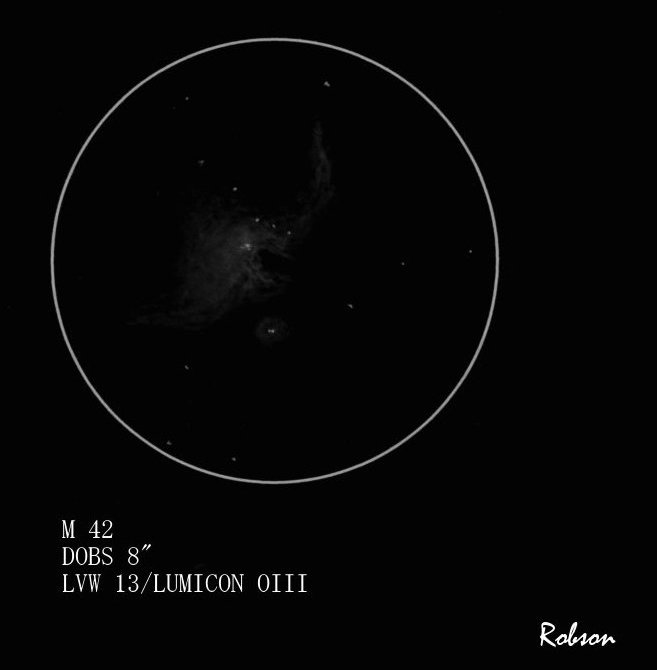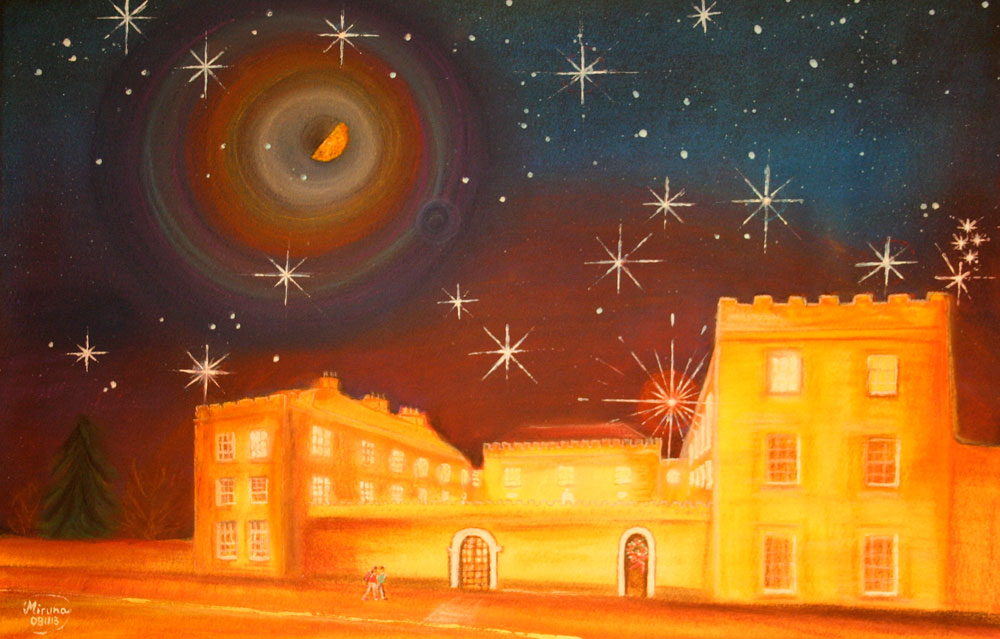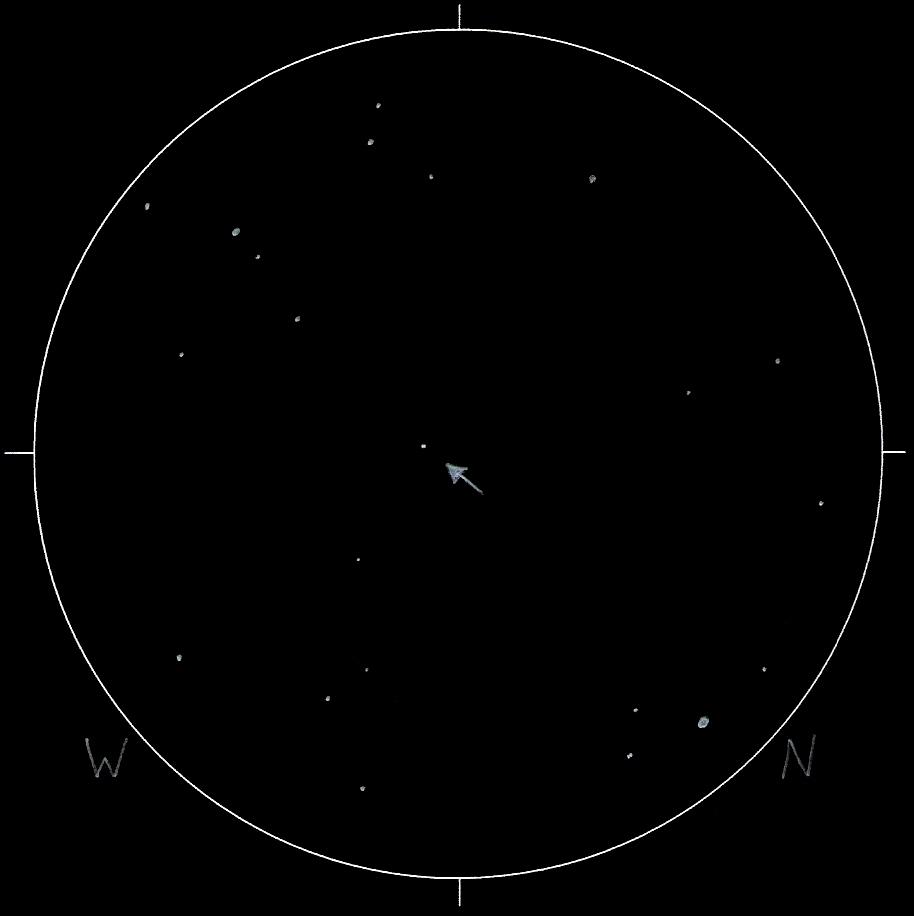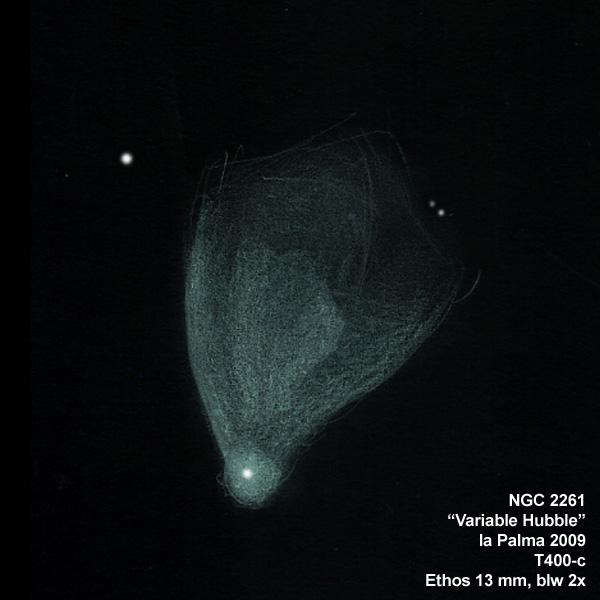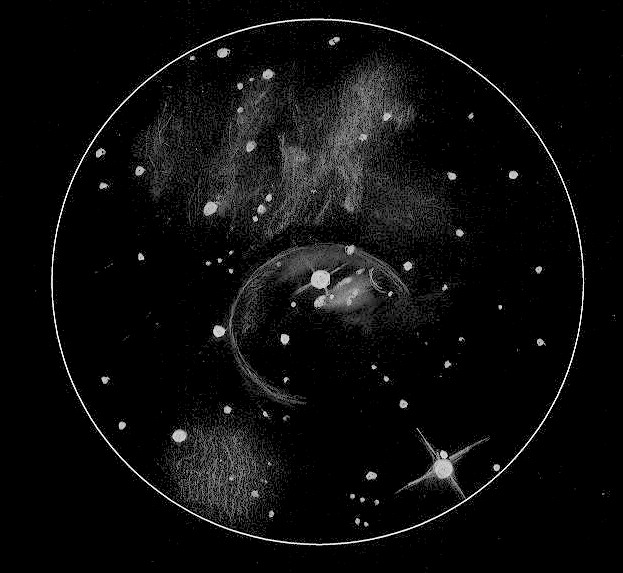Observation of eta Carinae
Object information
Object name:
eta Carinae
Object type:
Star
Magnitude:
-0.80
RA:
10h 45m 30s
Dec:
59° 44′ 39″ S
Constellation:
CAR
Observation details
Date of observation:
12 avr. 2010 19:05 UT
Length of observation:
58 min
Object position:
Alt: 52.0°, Az: 166.8°
Weather conditions:
Day: ++/- (33% cumulus) Wind V2-3, temp 30°, humidity 31%, Transparency 1 (on a scale from 1, best, to 5, very bad
Observation conditions:
Nught: SQM 21.57 in Crv (60° high), limited nake eye mag in Crv 7.2, seeing quite good S2/156 3/280 4/520 4-5/725
Observing site:
Namibie Tivoli
Instrument:
TN 508 Dobson Tivoli
Main eyepiece:
Televue Nagler 9mm Type 6
Barlow:
(None)
Magnification:
282x
Notes:
x282 Nagler 9mm, then
x529 Nagler 4.8mm, then
x725 Nagler 3.5mm
I have to increase gradually the power in order to have a deep and detail view of the object, then decrease it to improve the contast, and the color.
with 282x, The two small lateral “mustaches” are obvious, and precisely analysable, with the luminosity of their end decreasing regulary. The two dark spots of the SE lobe are well separated, and also analysable, including their shape, and orientation. The NW lobe is as large as the opposite one, but much less luminous, L3 instead of L6, in a scale from 1, limit, to 10, extremely bright.
The color is fantastic: deep, vivid, and strong orange. The star, itself, is even more saturated ! Probably the most beauteful orange anywhere in the sky
This drawing is the third I did.: Eta Carina is an extraordinary object, very much detailed, and each time, you discover new features.
Pencil and ink of China on Canson paper 21 x 29.7 cm, 200gr/cm2, then scanned, and some improvements with Paintshop Pro.
Much more details on my website: www.deepsky-drawings.com
Bertrand Laville

